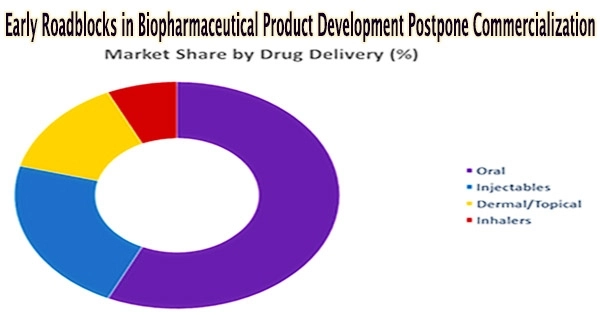Early roadblocks on the way to commercialization have been identified by a review of university inventions with patents that were licensed to biotechnology companies. The researchers propose that speedier commercialization could be achieved down the line with improved communication of fundamental research findings at the discovery stage.
Biotechnology companies routinely license discoveries produced in academic laboratories to create biopharmaceutical medicines. Bottlenecks are well known during clinical trials, which have a high failure rate.
However, a recent study quantifies the amount of time lost early in the pipeline when biotech businesses abandon a discovery and transfer the technology to other biotech companies for repurposing in a different disease area.
The researchers believe that the unappreciated cost of commercialization, which occurs when basic science research is repeated, put off, or never done, is highlighted by the fact that companies rarely share their basic research on an invention.
“The timeline for commercialization is much longer than most people think. There is so much turmoil and churn within the process,” said co-author Jerry Thursby, a professor and the Ernest Scheller, Jr. Chair in Innovation, Entrepreneurship, and Commercialization at the Scheller College of Business at the Georgia Institute of Technology.
The study was sponsored by the National Institutes of Health (NIH) and was published August 20 in the journal Science Translational Medicine.
Nobody knew the magnitude of how much licensing changes and the stages at which they change. The biotechnology industry is quite fragmented, and there are all sorts of informational problems.
Marie Thursby
Universities often conduct the majority of the fundamental research for biotechnology, which is then licensed to a small biotechnology company that furthers the research. A big biotech company with the resources to fund clinical studies will eventually receive a licensing from the small biotech company for the discovery.
According to the report, basic research rarely follows this simple path to commercialization and frequently zigzags among biotech companies and research fields before a medicine is finally created.
“What these data reveal is that there’s a lot of bench to bench translational research. It’s not linear,” said Marie Thursby, a study co-author and the Hal and John Smith Chair in Entrepreneurship at the Scheller College of Business. Matthew Higgins, an associate professor of strategic management, was also a co-author of the study.
The researchers created a database of 835 patents in 342 university licensing with biotech companies for the study. To determine whether patents were later sublicensed to another company for testing in a new illness category or whether the sublicense was to a sizable firm for clinical trials or commercialization, the researchers followed the trail of patents. Bench-to-bench translational research, as the authors call to it, frequently involves sublicensing, which resets the schedule for development.
“A very large fraction of the time, an invention pops out as something else and the timeline for the discovery stage starts all over again,” said Jerry Thursby.
Of the 835 inventions studied, 27 percent appeared in a second license. Five and a half years on average passed between the invention and the first license, and three and a half years passed on average between the first and second licenses.
This time span for the upstream phase of the translation process is substantial, the study says, given that the average time from discovery to approval of new drugs (including biologics) by the U.S. Food and Drug Administration (FDA) is 13 years.
Of the first-licenses that list a stage of development, 92 percent were either at the discovery or lead molecule stages (the earliest two stages, respectively), with only 6 percent listed in clinical trials. Among the second-licenses, only 22 percent were in clinical trials or beyond.
“Nobody knew the magnitude of how much licensing changes and the stages at which they change,” said Marie Thursby. “The biotechnology industry is quite fragmented, and there are all sorts of informational problems.”
This early-stage biomedical translation analysis proposes that stakeholders should develop programs and policies that improve early translation by more effectively introducing new discoveries into various disease pathways.
One option might be the formation of an open-source translational research database that complements clinicaltrials.gov, where patents and licenses for fundamental biomedical research believed to be destined for eventual therapeutic use initially would be logged and shared.
“What might be a failure to a biotech firm could be a success to society as a whole,” Jerry Thursby said.
















